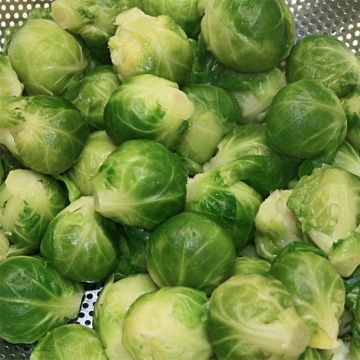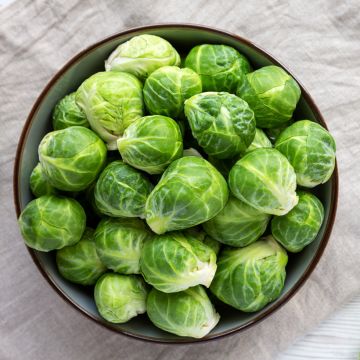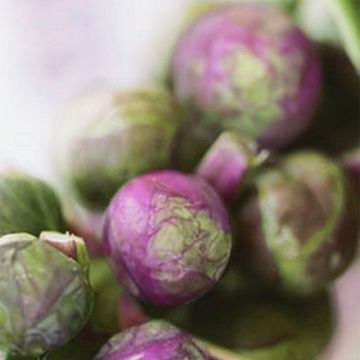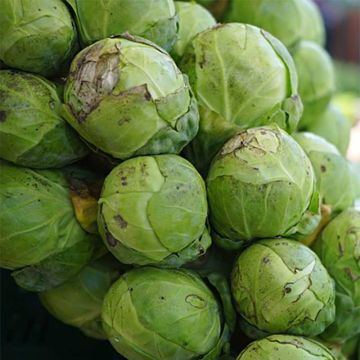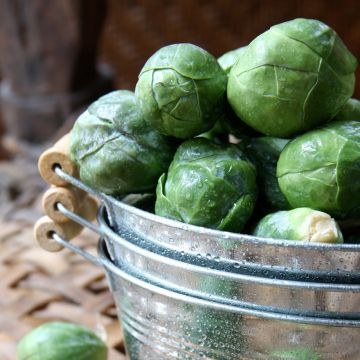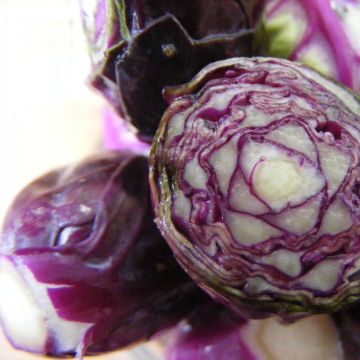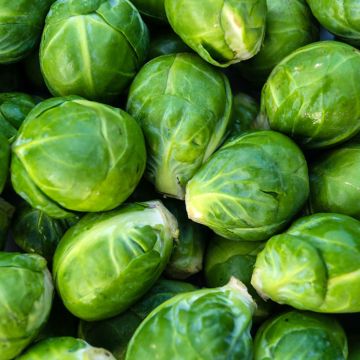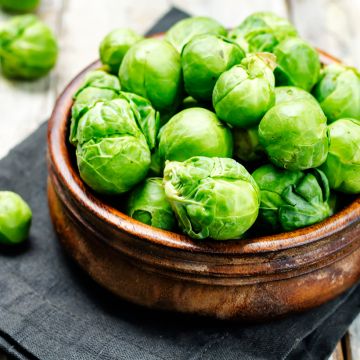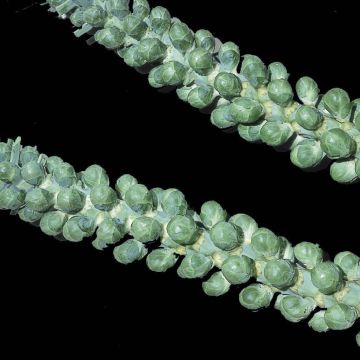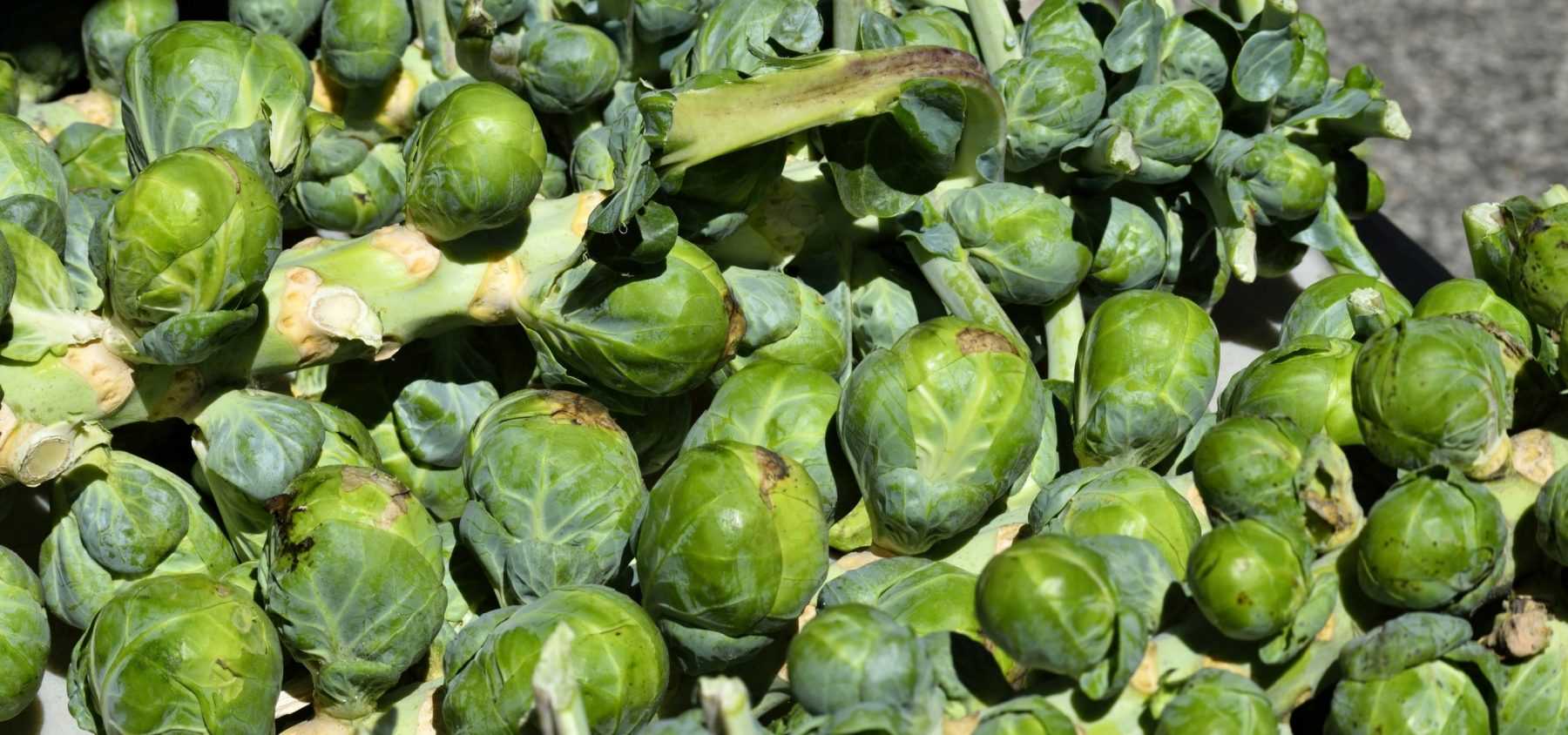
Growing Brussels Sprouts Successfully
In the vegetable garden
Contents
Originating from Belgium, Brussels sprouts are a variety of cabbage cultivated for their small auxiliary buds. They grow as a vertical stem adorned with small “buttons” which are the sprouts themselves. These are arranged in a spiral along the stem and typically measure between 1 and 3 cm. Each plant can produce between 20 to 75 of these miniature cabbages. The plant can reach a height of 60 to 120 cm. Its leaves are large, green, and resemble those of other cabbages.
Brussels sprouts are rich in vitamins, minerals, and antioxidants. Primarily grown in Europe and North America, they are often eaten cooked—whether boiled, roasted, or sautéed. Their flavour is slightly bitter but can become sweet and nutty when prepared well. Brussels sprouts are a superb ally for health and can be incorporated into various recipes for a nutritious meal.
Discover all our tips for growing them in your vegetable garden!
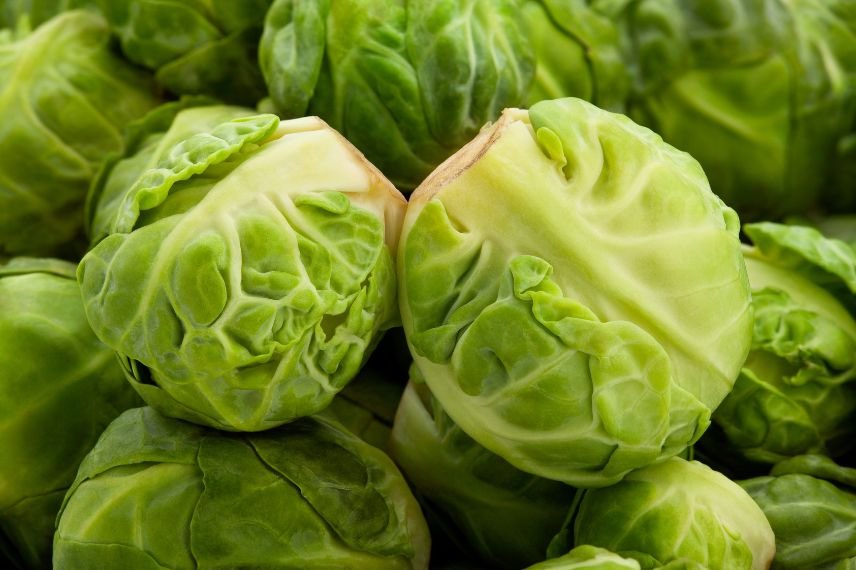
Location and soil
The Brussels sprout is a vegetable that is far less demanding than most cabbages. It thrives in sunny spots with moderately rich soil. It is particularly sensitive to excess nitrogen, which can result in the formation of undersized sprouts or cause them to split. It is not very tolerant when it comes to soil pH, which should ideally be between 5.6 and 6.5. In acidic soil, you should gradually raise the pH by adding calcium in the form of dolomite or lime.
In the vegetable garden, it grows well alongside parsnips, courgettes, and leeks, but avoid planting it near chicory or black radishes.
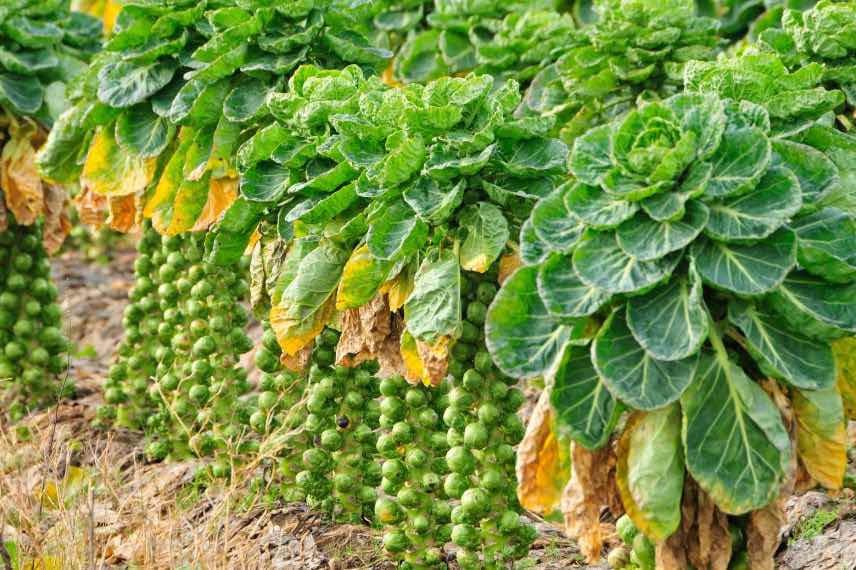
When and how to sow Brussels sprouts?
Generally speaking, Brussels sprouts are sown in March-April and planted out in May-June. However, each variety has its ideal sowing period: this information is provided on the seed packet, so it’s important to refer to it. Regarding variety selection, some like ‘Jade Cross F1’ are particularly early, while others such as ‘Sanda’ are rather late-season: combining them will allow for harvesting over an extended period.
You can sow directly in the ground or prepare seedlings to be transplanted later to their final position in the garden.
Preparing seedlings
- In a heated shelter at winter’s end, or in an unheated greenhouse or nursery bed at other times, sow seeds 1 cm deep in good seed compost
- Cover lightly with compost or vermiculite
- Remember to keep the substrate moist but not waterlogged
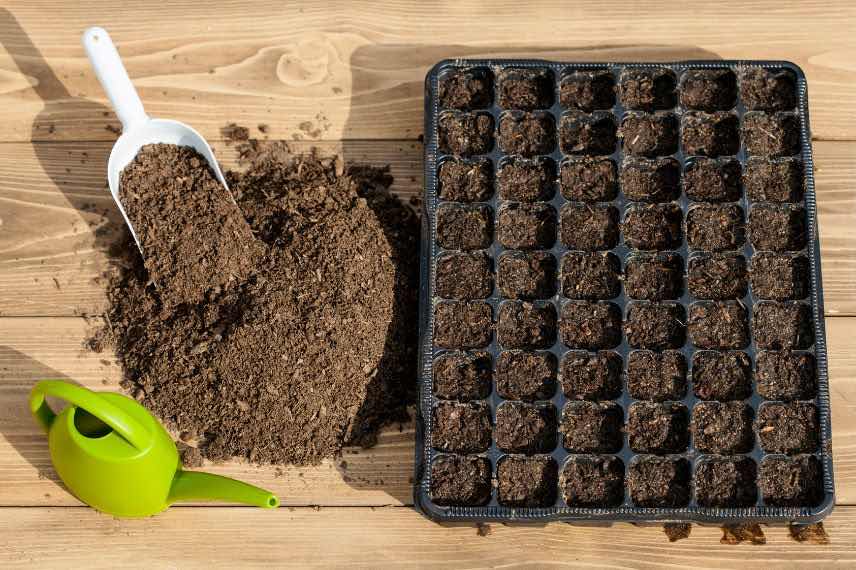
When the young plants appear strong enough to handle, prick them out into pots if needed. For seedlings grown in heated shelters, gradually acclimatise them to cooler temperatures before transplanting to the garden when all risk of frost has passed.
Direct sowing
- In well-prepared soil, draw 1 cm deep drills spaced 65 cm apart
- Sow the seeds and cover with a fine layer of soil
- When seedlings are well developed, thin them out, leaving one plant every 65 cm or so.
Discover other Brussels sprouts
View all →Available in 2 sizes
Available in 1 sizes
Available in 1 sizes
Available in 1 sizes
Available in 1 sizes
Available in 1 sizes
Available in 1 sizes
Available in 1 sizes
Available in 1 sizes
Available in 1 sizes
When and how to plant Brussels sprouts?
Preparing or purchasing seedlings for transplanting is the most common method. Once well-developed, the young plants are placed in their final position in the vegetable garden. They should be planted in a sunny, sheltered spot with warm, well-prepared soil: weeded, loosened with a spade or garden fork, then raked with a rake to create fine tilth.
- Space plants 65 cm apart in all directions (between rows and between each plant in the row).
- Soak the root ball in water briefly before planting
- Dig a hole, place the plant and cover with fine soil. Plants should be buried up to their first true leaves: new roots will form along the buried stem, ensuring better anchorage.
- As Brussels sprouts grow tall, it’s advisable to stake plants in windy locations.
- Water thoroughly.
- To reduce watering needs, we recommend mulching with thin successive layers of grass clippings, ideally mixed with dead leaves
- During cultivation, water moderately but regularly.
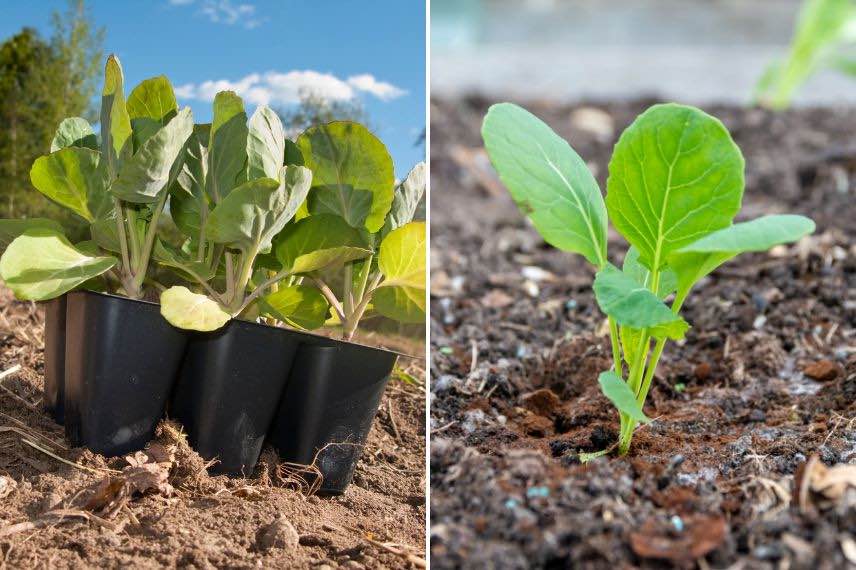
Care and Watering
The maintenance of these cabbages involves weeding, hoeing and regular watering. Their growth is slow, so these tasks need to be repeated regularly over a long period. They can be spaced out or significantly reduced if you mulch the soil with thin successive layers of previously dried grass clippings, for example.
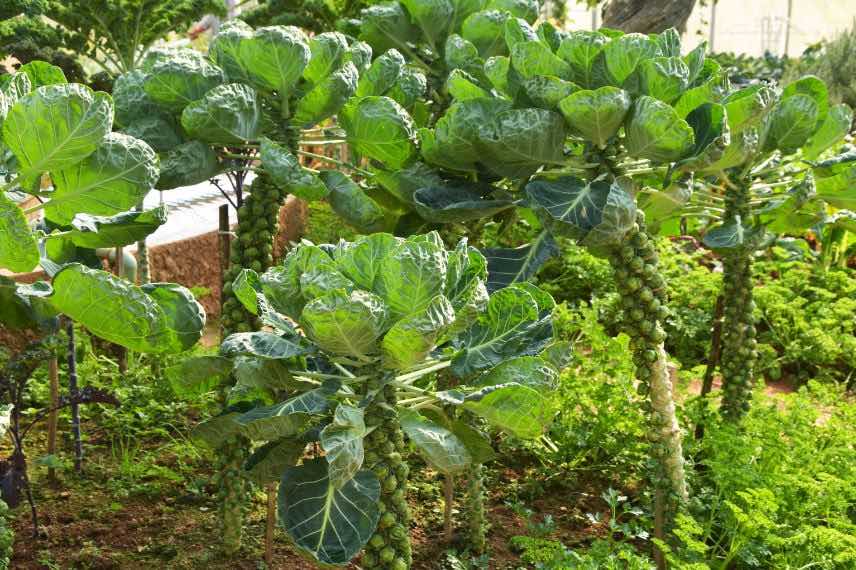
Pests and potential diseases
Cabbages are quite susceptible to diseases and pests. When growing Brussels sprouts, you may encounter:
– The cabbage root fly, whose larvae devour the roots,
– The cabbage white butterfly, whose caterpillars ravage the foliage,
– The cabbage gall midge which attacks the central bud (“blind cabbage”),
– Flea beetles that perforate the leaves of brassicas in general.
Various control methods exist against these pests (cardboard collars against the fly, spraying with Bacillus thuringiensis, manual collection of caterpillars…), but to keep them at bay, the best prevention is to install an insect-proof mesh.
Regarding diseases, clubroot is the most virulent. It manifests as wilting foliage accompanied by the appearance of nodules on the stem base and roots. There is no natural solution, but the best prevention is to respect crop rotation in the vegetable garden by not growing cabbage in the same spot for at least 5 years.
To learn more, check out our full article: Cabbage diseases and pests
Harvest
Brussels sprouts are harvested from September to December, or even until March for the latest varieties such as ‘Sanda’. The small sprouts can be cut with a knife or gently twisted off by hand when they reach 2-3 cm in size, starting from the bottom of the stem. For late varieties, it’s advisable to wait for the first frosts: this will enhance their sweetness and flavour.
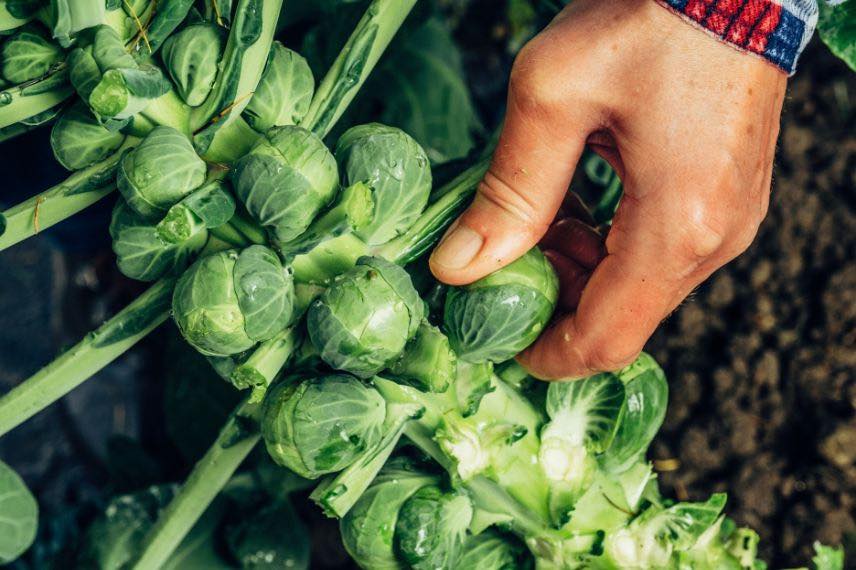
To go further
- Discover everything you need to know about cabbages in our comprehensive guide!
- Subscribe!
- Contents


































